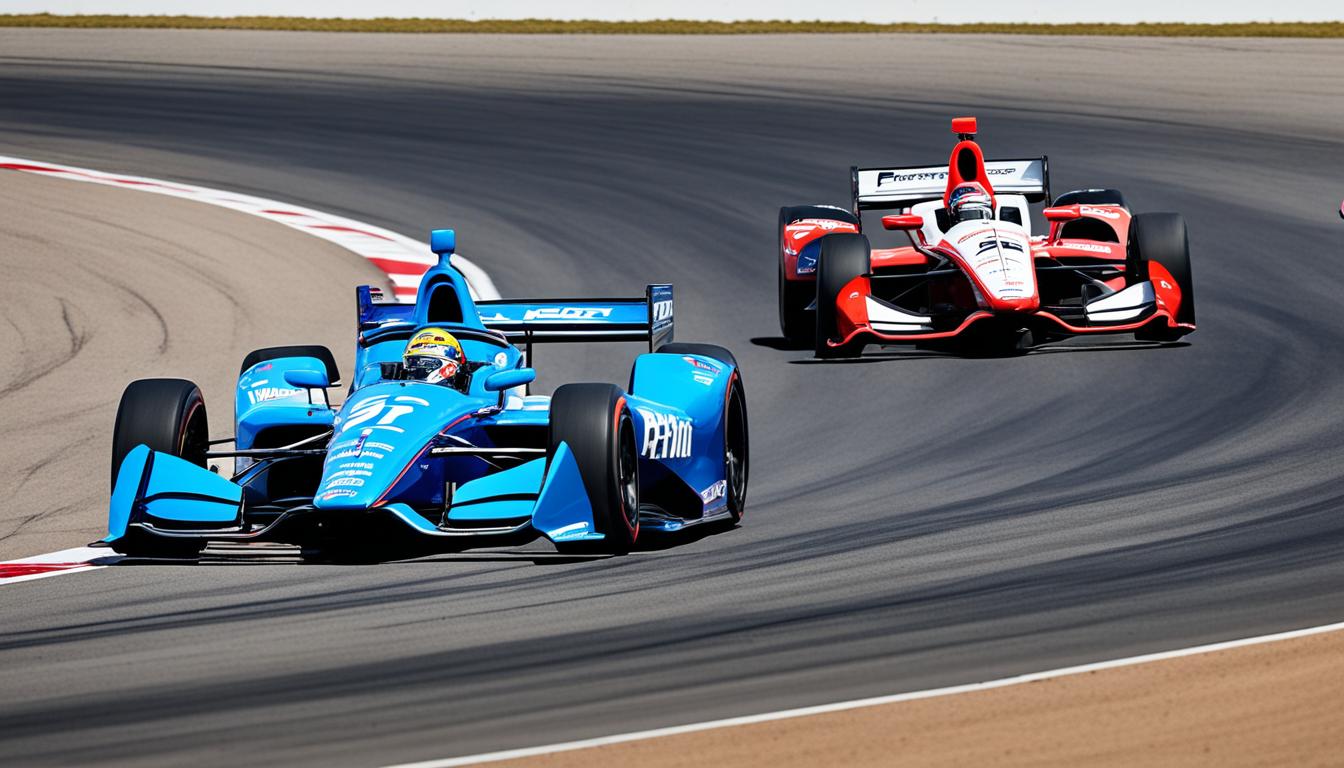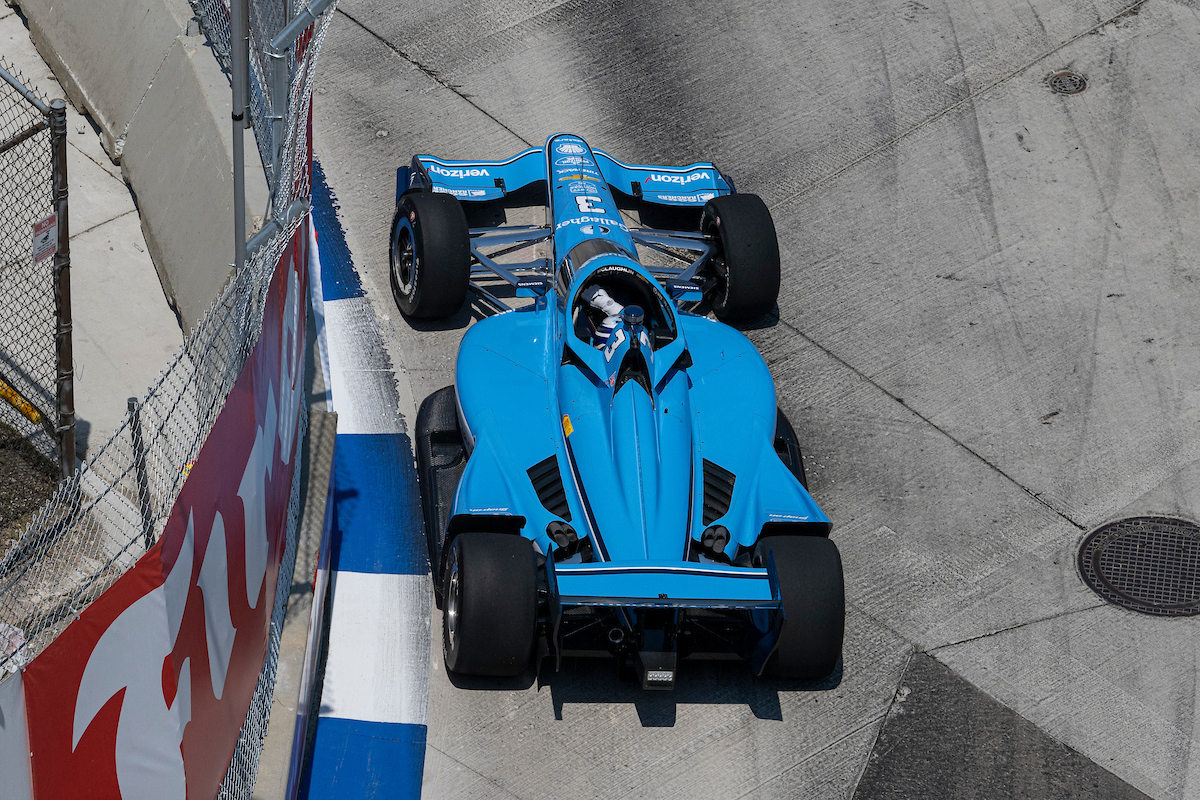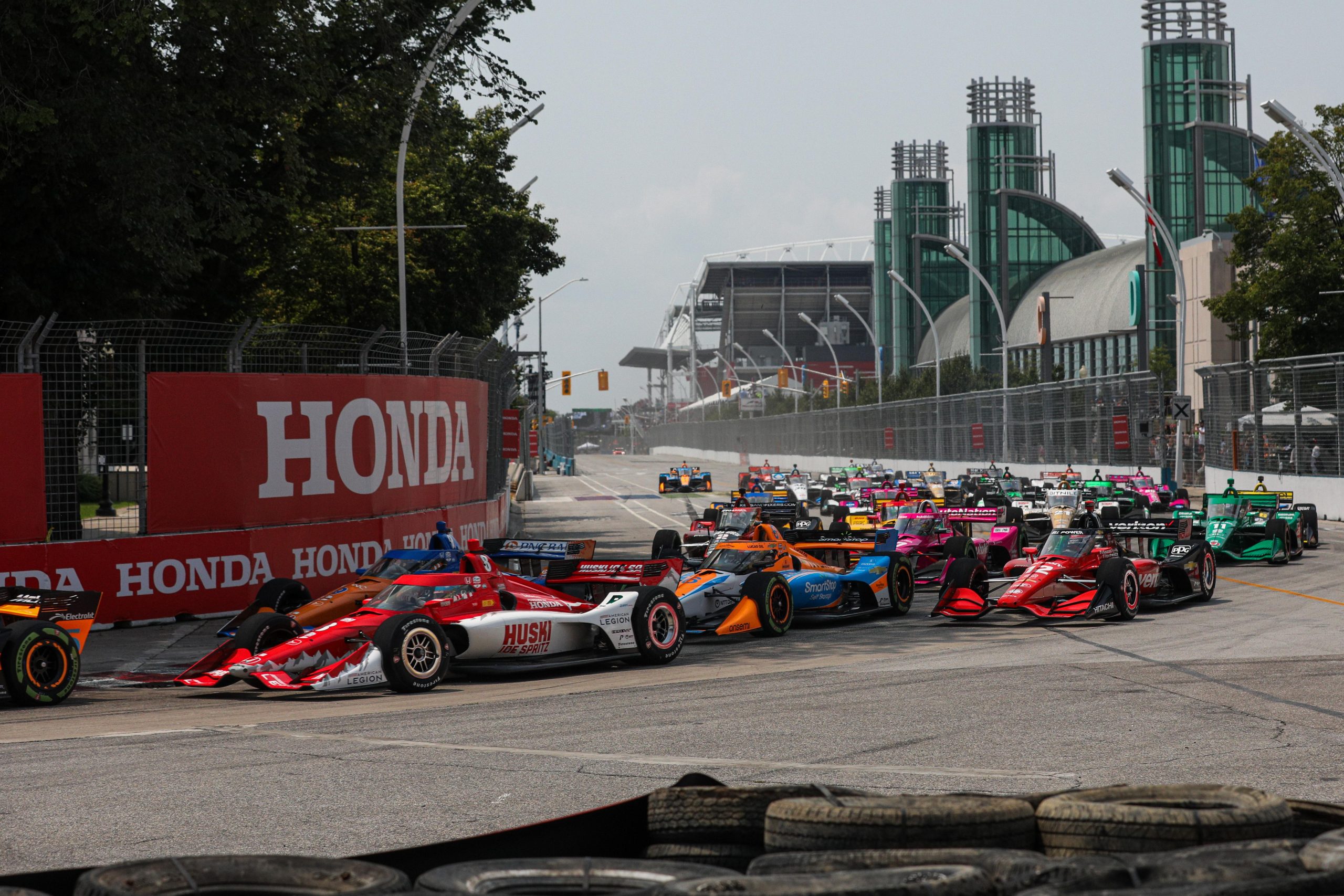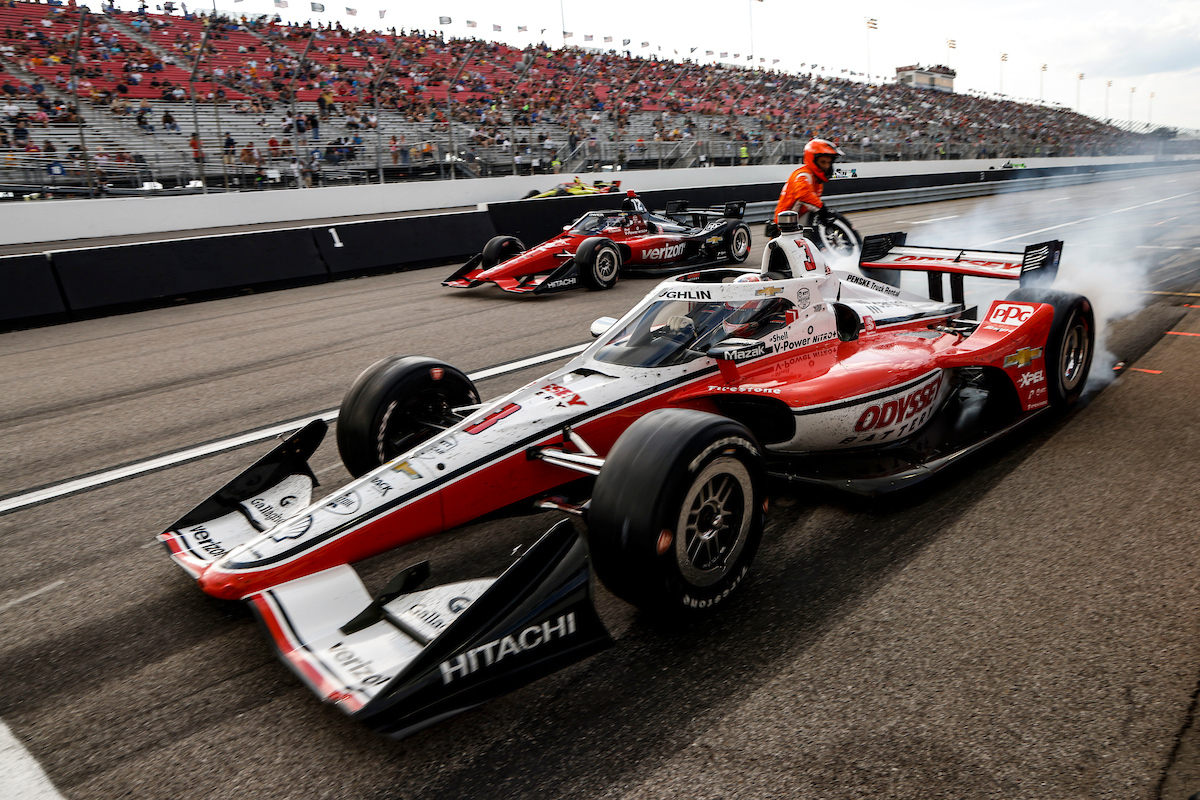Does IndyCar have a Halo?

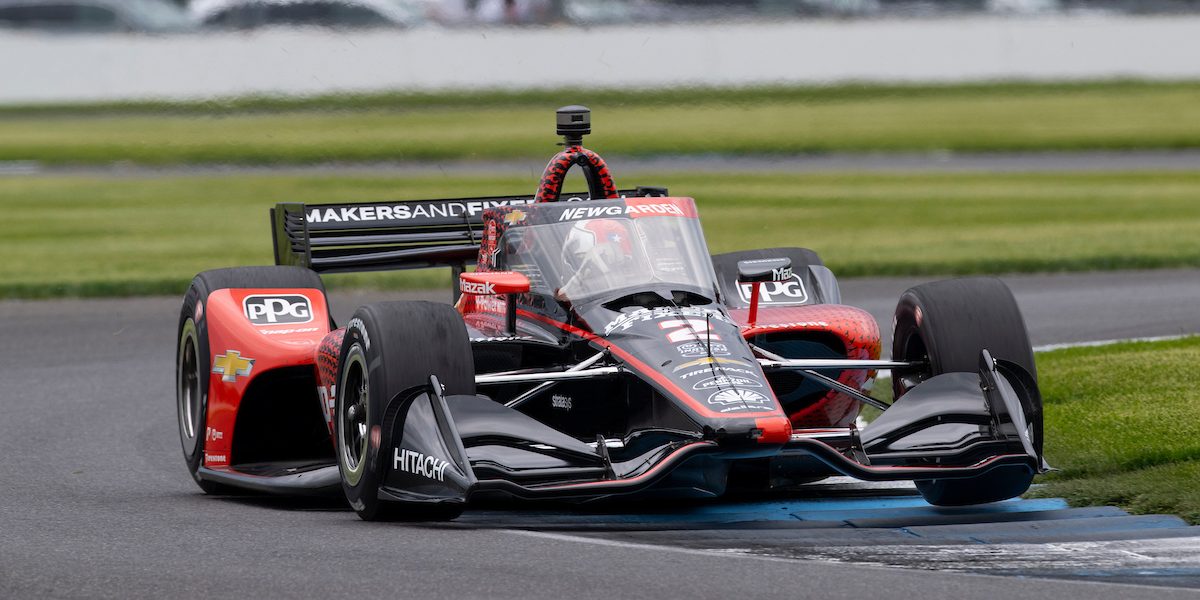
No, IndyCar does not have a Halo. Instead, the series has developed its own cockpit protection system, known as the Aeroscreen. Introduced in 2020, the Aeroscreen is a combination of a “Halo”-like structure used by Formula One with the added safety benefit of an aerospace-material, canopy-like windshield.
Designed to protect drivers from debris and other objects that may strike the cockpit during a race, while also providing improved visibility and aerodynamics, the Aeroscreen represents IndyCar’s commitment to driver safety and innovation in the sport.
In this article, we’ll explore the development and implementation of the Aeroscreen in IndyCar racing, and how it compares to other safety systems used in motorsports.
Table of Contents
The Concept of “Halo” in Motorsports
The concept of “halo” in motorsports refers to a safety device that is designed to protect drivers from head injuries in the event of a crash.
The halo is a curved bar that is mounted above the driver’s cockpit and extends over their head, creating a protective barrier that can deflect debris and absorb impact forces.
The halo was first introduced in Formula One racing in 2018, following a number of high-profile crashes that highlighted the need for improved driver safety measures.
While the halo has been somewhat controversial among fans and drivers, many experts believe that it has already proven its effectiveness in preventing serious head injuries in the event of a crash.
Definition and Function of the Halo
The Halo is a must-have for drivers in motorsports. It’s made of strong, light material and attaches to the car’s chassis. It shields the driver’s head from impact in a crash. It’s revolutionized safety and become mandatory in most categories.
It’s a protective barrier with three vertical supports connected to the cockpit. It deflects debris and projectiles from the driver. Plus, it can even improve aerodynamics by shaping airflow around the cockpit reducing drag and boosting handling.
History and Implementation of the Halo in Motorsports
In Motorsports, the use of “Halo” has been a huge advancement for driver safety. It has brought about remarkable changes, marking the beginning of a new era in motorsport racing.
Despite the initial criticism and concerns over visibility, several tests showed that Halo was up to the task of keeping drivers safe. It has even saved lives! During the Bahrain Grand Prix, Romain Grosjean crashed into a wall and caught fire. Halo protected his head from the debris.
Halo has become a key element in Motorsport design and is being used in various racing categories around the world. Despite the improved safety features, nothing beats the thrill of driving at 200mph and risking your life!
Safety Innovations in IndyCar
To ensure safety in IndyCar, the sport has implemented various innovations. Before the introduction of the Halo, IndyCar had several safety measures in place. With the implementation of the Advanced Frontal Protection (AFP) device, IndyCar has taken yet another step in keeping its drivers safe. In this section, we will analyze the effectiveness of the AFP device.
Pre-Halo Safety Measures in IndyCar
Before the introduction of the Halo system, IndyCar had a focus on driver safety. To improve buckling resistance, they strengthened cockpit surrounds. They also developed energy-absorbing sidepods and anti-intrusion panels to protect from accidents.
Testing protocols evaluated the cars for structural integrity and containment capacity. Drivers were required to wear fire-resistant gear and helmets with advanced protection.
Implementation of the Advanced Frontal Protection (AFP) device
Advanced safety tech is super important for motorsport growth. To improve IndyCar driver safety, the Advanced Frontal Protection (AFP) device was introduced. This device shields the driver’s head during crashes or collisions.
In Table 1, more details about the AFP device can be seen.
| Parameter | Value |
|---|---|
| Length | 3 inches |
| Height | 0.750 inches |
| Weight | Less than one pound |
| Material | Titanium |
This tech has made IndyCar safety regulations much better. The AFP device attaches to the car’s nose cone, providing an extra layer of protection from debris that may fly up while racing at high speeds.
Analysis of the AFP device’s effectiveness
To investigate the success of IndyCar’s latest safety innovation, we analyse the airborne preventative device. Here’s a look at the data:
| Analysis of Airborne Preventative Device Effectiveness | |
|---|---|
| Number of Incidents | 4 |
| Number of AFP Devices | 4 |
| Prevented Incidents | 3 |
| Unaffected Incidents | 1 |
Its impact on racecar performance and safety is not yet known. Other factors, like human error and technical difficulties, can also cause crashes.
A young driver nearly died in an airborne accident before IndyCar improved safety. It’s clear that innovation is key for motorsport safety, and analysing devices like this is essential for protecting drivers.
IndyCar’s Stance on the Halo
To understand IndyCar’s stance on the Halo, a safety device used in Formula 1, you need to know the pros and cons of implementing it. Although many see the device as essential for improving safety, IndyCar decided against using the Halo. However, there are alternative solutions that could help elevate safety in IndyCar.
Pros and Cons of Implementing the Halo
| Pros | Cons |
| Increased driver safety Better protection against head injuries |
Potentially obstructs driver vision Increases weight of car, which could affect performance |
| Proven effectiveness in Formula One racing Mandatory in many other motorsports championships |
Does not protect against all types of accidents Possible hindrance to driver egress following an accident |
| A potentially life-saving addition Gives drivers peace of mind |
No guarantee of safety Possibility for device failure |
IndyCar’s Decision Against Implementing the Halo
The F1 car design has seen progress, and so has the idea of Halo in other racing categories. Though its popularity is growing, IndyCar doesn’t want to take part due to lack of urgency in the potential risk.
Officials from IndyCar have said they are still aware of driver safety; however, their research implies no need for Halo right now. This was decided after taking data and feedback from drivers, who had issues with visibility if the technology was installed.
Though some drivers may feel safer with the Halo, others raised valid concerns about performance. It could add weight and wind resistance, which would reduce speed and disturb vehicle balance – something which is dangerous during high-speed races.
It’s worth noting that, despite not using Halo, IndyCar already has an established list of safety measures that have been successful.
Alternative Solutions for Improved Safety in IndyCar
To bolster safety in IndyCar, many solutions have been implemented. These include:
- Strengthening the car’s body
- Introducing clear canopies
- Putting in cameras and radar tech
- Using sensor-fitted gloves
Regular check-ups and updates also benefit the safety of IndyCar races. After the death of Dan Wheldon in 2011, changes to make IndyCar racing more secure and efficient began. This included a redesigned chassis with improved crash cage tech to absorb energy during high-speed accidents.
Does IndyCar have a Halo? – Key Takeaways
Their commitment to safety has been clear. Technology, such as the Aeroscreen, has been used to keep drivers safe. The Halo hasn’t yet been introduced, but the Aeroscreen provides similar protection.
Further, IndyCar has worked hard to improve safety on tracks. This includes limiting track time during bad weather and watching driver fitness.
Also, IndyCar has a system to investigate accidents and identify ways to enhance safety measures.
Does IndyCar have a Halo? – Frequently Asked Questions
1. Does IndyCar have a Halo?
No, IndyCar does not have a Halo. Instead, IndyCar has developed its own cockpit protection system, called the Aeroscreen, which was introduced in 2020. The Aeroscreen is a combination of a “Halo”-like structure used by Formula One with the added safety benefit of an aerospace-material, canopy-like windshield. According to a 2019 article from NBC Sports (source: NBC Sports), the Aeroscreen is designed to protect drivers from debris and other objects that may strike the cockpit during a race, while also providing improved visibility and aerodynamics.
2. Why did IndyCar decide to add the Halo?
IndyCar did not decide to add the Halo to its cars. Instead, IndyCar developed its own cockpit protection system, called the Aeroscreen, which was introduced in 2020. The Aeroscreen is a combination of a “Halo”-like structure used by Formula One with the added safety benefit of an aerospace-material, canopy-like windshield. The Aeroscreen was developed in response to several high-profile accidents in IndyCar racing, including the 2015 accident that led to the death of driver Justin Wilson. The Aeroscreen is designed to protect drivers from debris and other objects that may strike the cockpit during a race, while also providing improved visibility and aerodynamics.
3. How does the Halo work?
The Halo is a curved metal bar that is attached to the car’s chassis. It sits in front of the driver’s head, providing a barrier to prevent debris from entering the cockpit area. It is designed to withstand the force of a large impact and can help to protect the driver’s head in the event of a crash.
4. Has the Halo system been effective?
While it is still relatively new, there have been several incidents where the Halo has been credited with protecting the driver from serious injury. It is considered to be a significant improvement in terms of driver safety.
5. Are there any downsides to the Halo?
Some critics have argued that the Halo obstructs the driver’s view and could make it more difficult to exit the car in the event of an emergency. However, these concerns have been largely dismissed by drivers and racing officials.
6. Will other racing organizations adopt the Halo in the future?
It is possible that other racing organizations will adopt the Halo in the future, particularly if it continues to be effective in improving driver safety. However, each organization may have its own set of safety regulations and may make its own decisions about whether or not to implement the device.







